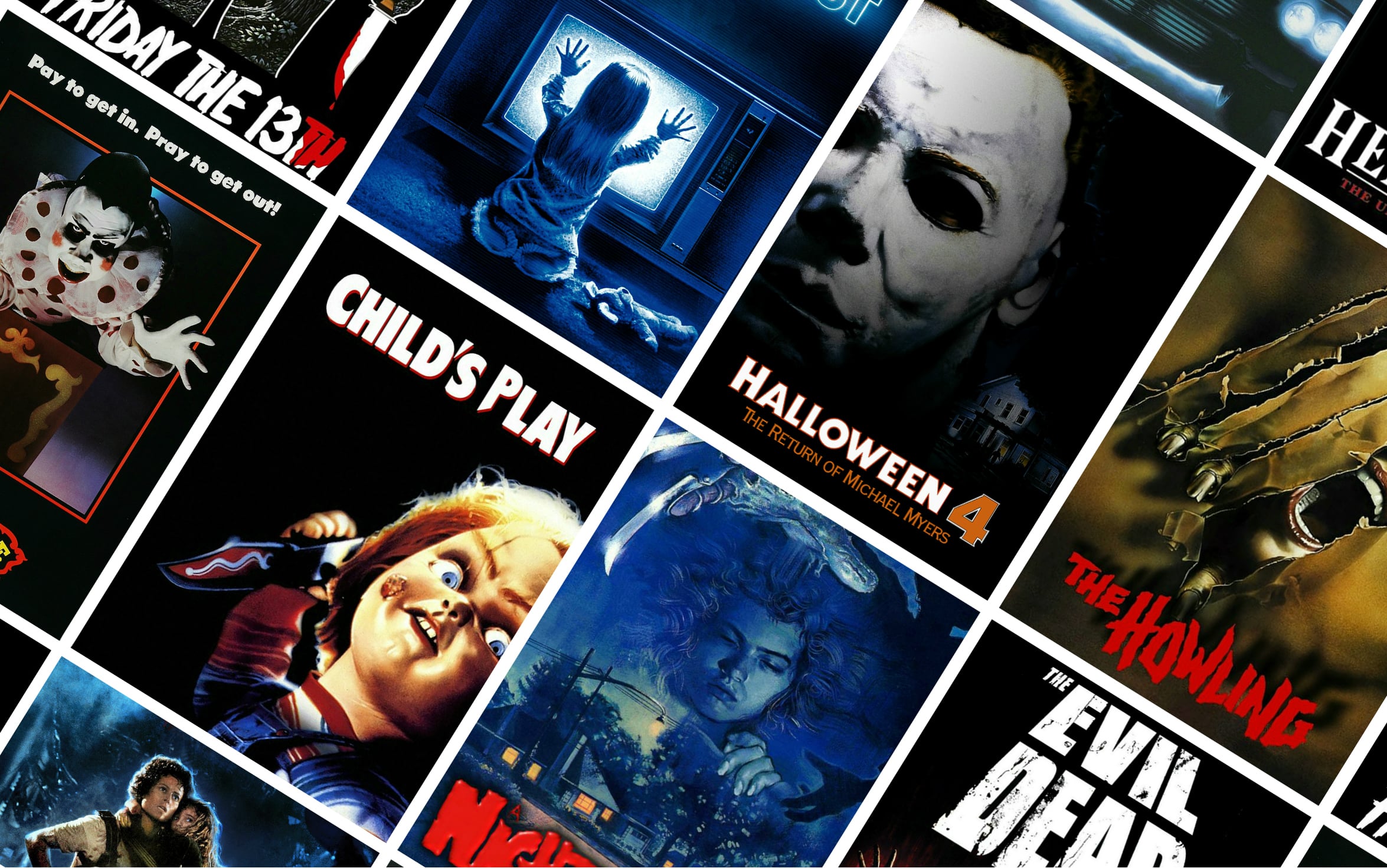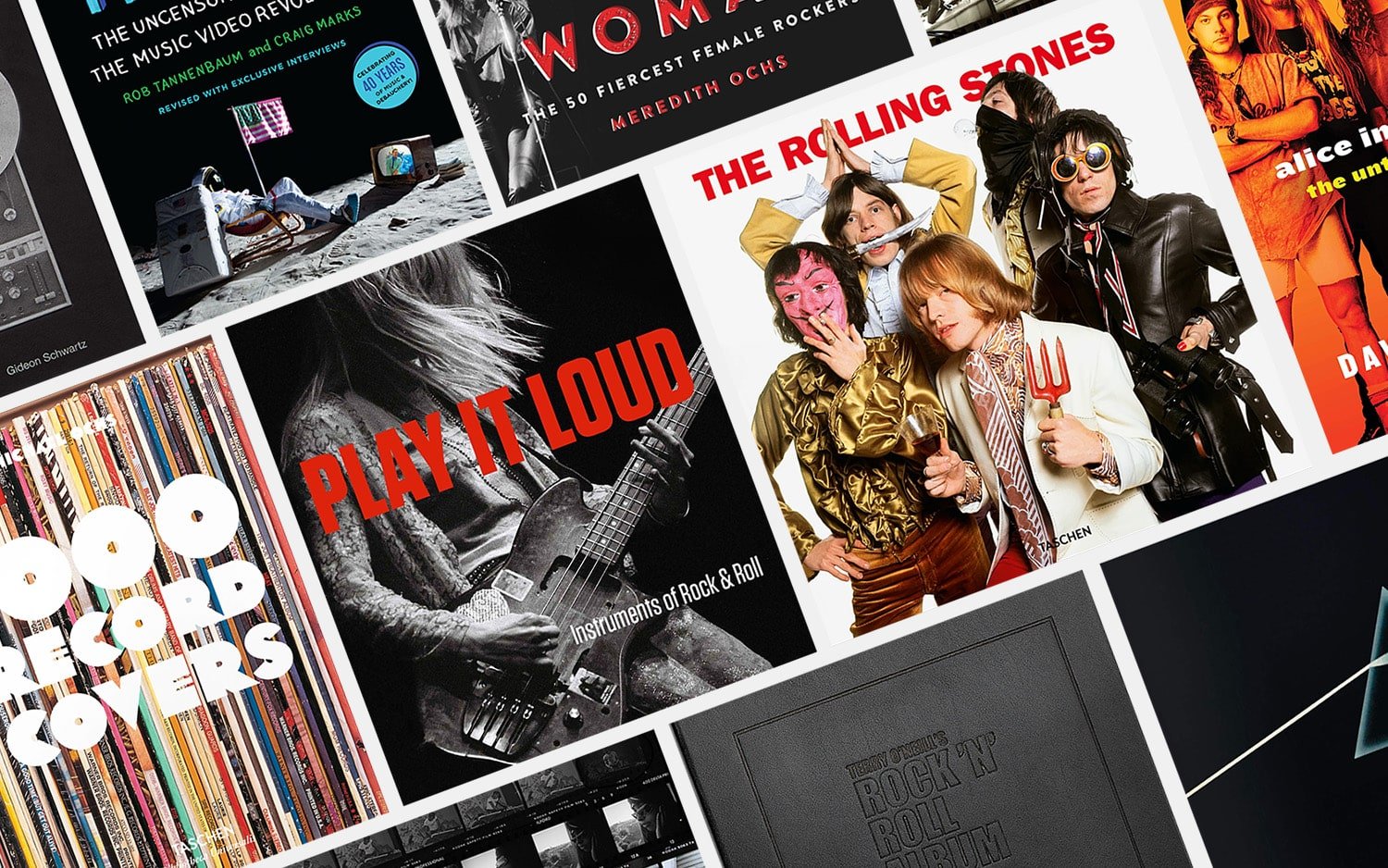70’s-era horror laid the groundwork for the modern horror film. Then the 80’s built a haunted house sideshow on top of it. Vintage horror standbys — vampires, zombies, ghosts, werewolves — were given new, um, life, while a seriously freaky band of new monsters made sure we didn’t sleep well for a while.
It’s the decade that spawned a slew of horror franchises, some of which just keep on coming (Halloween Ends, anyone?). With buckets of blood, terrorized teens, thousands of imaginative ways to die, and just the right amount of cheese, 80s horror movies gave fans exactly what we wanted.
Turn out the lights and go back to where Jason and Freddy began, where Michael and Leatherface kept going. Re-experience the sick genius of the masters of horror from Romero to Carpenter to Hooper. These are the 25 best 80s horror movies that managed to claw (machete, axe and chainsaw) their way to the top of the carnage pile and we think you’ll see a few here that have earned a dark place in your movie collection.

Pet Sematary (1989)
“Sometimes, dead is better.”
The lesson here is: “Careful what you wish for.” When the family cat comes back to life (though a bit more terrifying than before) after being buried in the pet sematary, a grief stricken father hopes it will work on his son too. See above lesson for clues as to how that turns out. By ‘89, a dozen or so Stephen King works had crossed over into film but this is one of the few that he wrote the screenplay for… and the only one with an original song by the Ramones.
Fun Fact: The character of Zelda, Rachel’s terrifyingly deformed sister was not played by a woman but by a male actor named Andrew Hubatsek. The film’s director, Mary Lambert, believed that using a man for the role would make Zelda appear even more unsettling and unnaturally gaunt. This choice certainly added to the eeriness and remains one of the most haunting aspects of the film for many viewers.
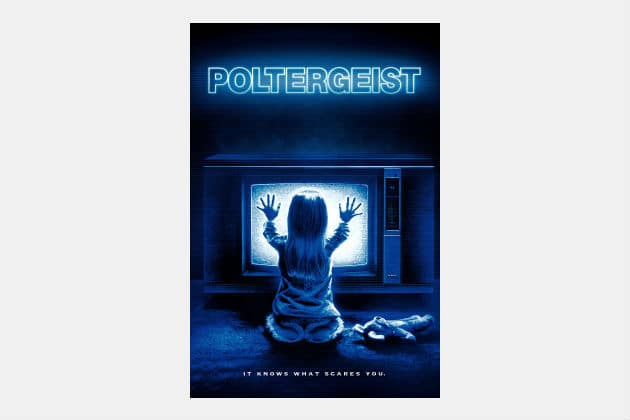
Poltergeist (1982)
“Hello? What do you look like? Talk louder, I can’t hear you.”
Thanks to the 24-7 nature of modern television, we don’t see a lot of static on our sets these days. Which is good. Because, as Poltergeist taught us, that’s how the ghosts get in. This is a classic when it comes to horror (despite its PG rating—the only one on our list) because it made the familiar frightening. TVs, closets, trees, toy clowns (OK, those are always creepy). The very house itself turned on its family and that’s what horror film is about, the revelation of terror just beneath the otherwise placid surface of the everyday.
Fun Fact: Real human skeletons were used during the infamous swimming pool scene. It was cheaper to purchase real skeletons than to acquire fake ones. This revelation later fueled rumors and urban legends about the film being “cursed,” especially given the untimely deaths of some cast members in the years following its release. The use of real skeletons and the subsequent “curse” have since become part of the movie’s lore, adding an even eerier layer to its legacy.
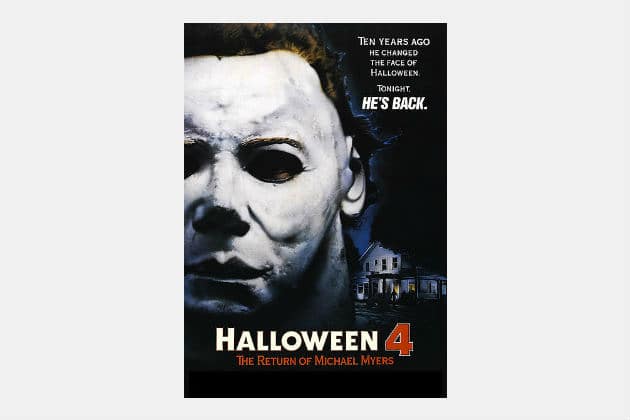
Halloween 4: The Return Of Michael Myers (1988)
“We are talking about evil on two legs.”
Halloween II picked up immediately after the events of the first film and proceeded to bring Michael Myer’s story to an “end.” But this is horror. The bad guy is never dead. When he didn’t return for Halloween 3 the general sigh of disappointment was heard clearly by the producers and, like the subtitle says, Michael Myers returned for round 4. This time he’s awake from his coma, and since there’s no more Laurie Strode to terrorize, he sets his tunnel vision on her daughter, with his tireless doctor in pursuit.
Fun Fact: In certain scenes of the film, Michael Myer’s mask appears to have blonde hair instead of the traditional dark brown. This was because a mistake was made when ordering the mask. An initial mask with pink skin and blonde hair was ordered, which was obviously not appropriate for the character. To rectify the error, they painted the mask white and dyed the blonde hair dark. However, in some of the distant shots, you can still see Michael Myers with the incorrect blonde hair, as they used the original mask for those scenes.

Friday The 13th (1980)
“But… then he’s still out there.”
What was it about the 80s? It seems like every horror title that began in the decade went on to become a franchise, with some of those sequels/remakes/spin-offs continuing into our current remake-hungry decade. Go back to where this one started, before a Final Chapter gave way to a New Beginning — before the hockey mask even. Start here where a drowned kid, a summer camp lake and a bit of vengeance mix pleasingly with a diminishing handful of teens and many, many sharp weapons. Easily the quintessential 80’s horror movie that every movie buff must watch this time of year.
Fun Facts: The film’s makeup and special effects maestro, Tom Savini, was responsible for creating the film’s grisly and memorable death sequences. One of the reasons he took the job was to showcase how he believed horror movie deaths should look based on his experiences as a combat photographer in Vietnam. His aim was to make the deaths appear shockingly real.
Additionally, the character of Jason Voorhees wasn’t the central killer in this first installment. Instead, it was his mother, Mrs. Voorhees, who was the main antagonist. Jason only became the iconic hockey-masked killer in the sequels. This twist is often forgotten, even though it’s a pivotal part of the original story.
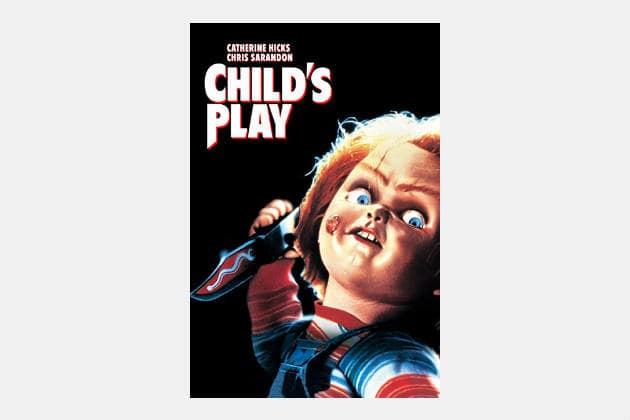
Child’s Play (1988)
“I’m your friend ‘til the end!”
If you came up in the 80s, you probably remember commercials for a doll for boys Hasbro was selling called My Buddy. Three years later, the idea of bringing home a doll for boys, or for anyone else, was made unthinkable with the introduction of Chucky—a talking, overalls-clad toy who happens to be possessed by a serial killer. Soon the bodies start to pile up in increasingly unpleasant ways. It’s one of those films that manages to balance laughs — and the laughable — with some genuine scares.
Fun Fact: The character of Chucky the doll was operated using a combination of animatronics and actual people. For some of the scenes, especially those that required more intricate movements, a little person was dressed up as Chucky to make the doll appear life-like. In fact, Alex Vincent, who played the young Andy Barclay, mentioned in interviews that he was initially scared of the “Chucky” actors because they were adults in full Chucky makeup and costume, and it looked incredibly eerie on set. The blending of practical effects with human performance gave Chucky his uniquely disturbing and lifelike presence on screen.
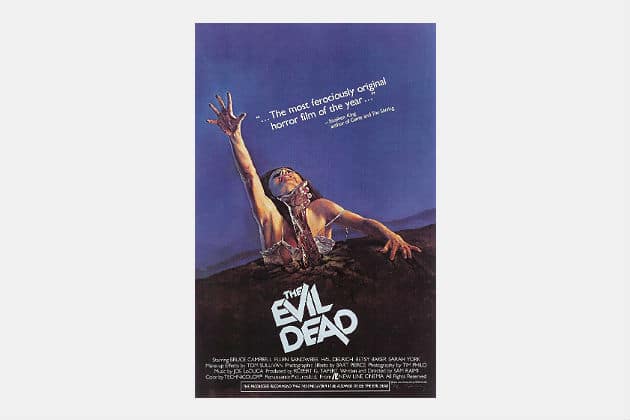
The Evil Dead (1981)
“Soon all of you will be like me… And then who will lock you up in a cellar?”
The Evil Dead proved you don’t have to have a huge budget to make an enduringly great horror film. With a little bit of cash from investors, a cabin in Tennessee and infectious kinetic energy, Sam Raimi and Bruce Campbell shot a gory, over acted, deliciously unhinged movie. With a basic plot — 5 teenagers find a recording that unleashes demonic forces — the fun begins when the demonic forces start systematically possessing the teens, and dismemberment is the only cure.
Fun Facts: The film’s extremely low budget led to a lot of improvisation and resourcefulness on set. For example, the iconic “shaky cam” shots, where the camera seems to race through the woods from the demon’s perspective, were achieved by mounting the camera on a piece of plywood. Director Sam Raimi and his crew would then run with the plywood, holding it on either side, to get that unique, fast-moving shot.
Also, the rundown cabin where the film was shot was discovered by the filmmakers in Morristown, Tennessee, and was not a set. The crew had to live in that cabin during the shoot, and due to its poor state, it was a less than ideal living situation. These challenges, combined with the team’s creativity, helped to create the cult classic horror film.
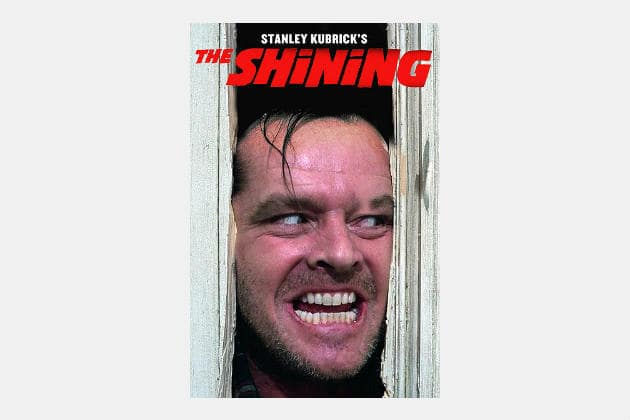
The Shining (1980)
“You are the caretaker. You have always been the caretaker.”
Kubrick’s film rises above any genre limitations to the level of cinema artistry, but it also does a fine job of being scary, creepy and very very unsettling. The Overlook Hotel doesn’t have a rosy past: the last winter caretaker murdered his family. Jack promises that won’t happen but then proceeds to descend into madness as his psychic son sees visions of the hotel’s bloody past and future, and Jack’s wife just wants to get out.
Fun Facts: In the iconic “Here’s Johnny!” scene where Jack Nicholson’s character breaks down the bathroom door with an axe, Stanley Kubrick had originally used a prop door for that scene. However, Nicholson, who had worked as a volunteer firefighter in the past, tore it down too quickly due to his experience with an axe. As a result, Kubrick opted to use a real door for the shot.
The line “Here’s Johnny!” itself was improvised by Nicholson and wasn’t in the original script. The line is a reference to Johnny Carson’s introduction on “The Tonight Show,” and it became one of the most famous lines in movie history, even though it was a spur-of-the-moment addition by Nicholson.

A Nightmare On Elm Street (1984)
“Nine, ten, never sleep again.”
Here’s the movie that made teenagers in the 80s afraid to go to sleep. Instead of the lurking silent-type killers we have in Jason and Michael Myers, Freddy Krueger liked to talk and taunt his victims. Which made him all the more terrifying (yes, the glove covered in knives also helped). The film dipped into nightmarish landscape, making you wonder what was real and what was a dream, but since Freddy kills people in their sleep, it didn’t really matter.
Fun Fact: Johnny Depp had his first significant film role in “A Nightmare On Elm Street” as Glen Lantz, Nancy’s boyfriend. Wes Craven, the director, reportedly cast Depp after his daughter and her friend saw his audition and thought he was dreamy. Initially, Depp wasn’t sure if he would get the part because Craven was also considering an actor who looked more like a “boy next door.” But in the end, Craven’s daughter’s opinion prevailed, and Depp landed the role. This marked the start of what would become a highly successful acting career for Depp.
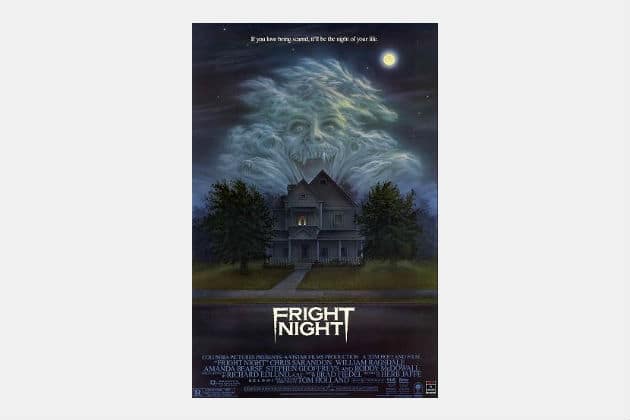
Fright Night (1985)
“All your generation seems to be interested in is ski-masked murderers slashing young virgins.”
What would you do if a vampire moved in next door? If everything you knew about vampires came from the movies, getting a guy who once hunted vampires on screen might make total sense. And so goes the plot of Fright Night. The visual effects are gruesomely convincing and watching Roddy McDowell transform from has-been actor to true believer is fun to watch. With just enough camp to be satisfying and a competent blend of horror and humor, Fright Night deserves its cult status.
Fun Fact: Actor Chris Sarandon, who played the suave vampire Jerry Dandrige, only agreed to do the movie under one condition: if his character could have a reason or motivation for his actions other than just being evil for evil’s sake. To address this, the script was adjusted to give the character a backstory, suggesting a hint of loneliness and tragedy behind his vampire façade. This added depth made Jerry Dandrige one of the more memorable vampires in cinematic history and showcased Sarandon’s ability to bring nuance to his roles.
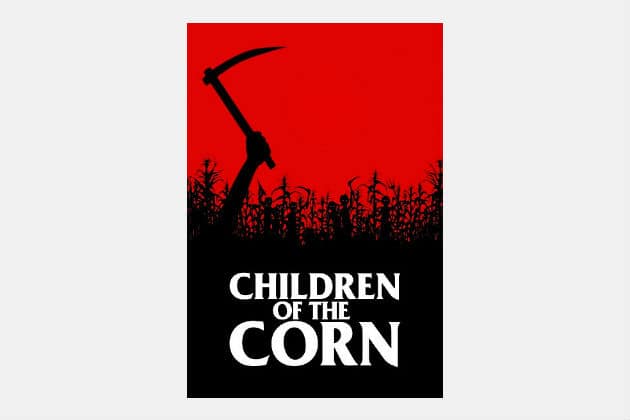
Children Of The Corn (1984)
“Outlander! Outlander! We have your woman!”
Would 80s horror movies exist without Stephen King? Of course. But the list you’re reading now would be about 5 titles shorter — to say nothing of the influence. King originally wrote the screenplay here (based on a short story that first appeared in Penthouse) but it was scrapped for a script with more violence. The story follows a couple who drive through Nebraska and encounter a cult of children who really don’t like adults. Seeing a bunch of armed kids chanting “Kill” leaves a uniquely disturbing impression.
Fun Fact: The town of Gatlin, Nebraska, where the movie is set, is entirely fictional. However, the film’s location shooting took place in the real town of Hornick, Iowa. After the movie’s release, many fans tried to find Gatlin on maps and even made trips to Nebraska searching for it. The popularity of the film led to several sequels and remakes, and “Gatlin” has since become synonymous with creepy, abandoned towns in horror lore.
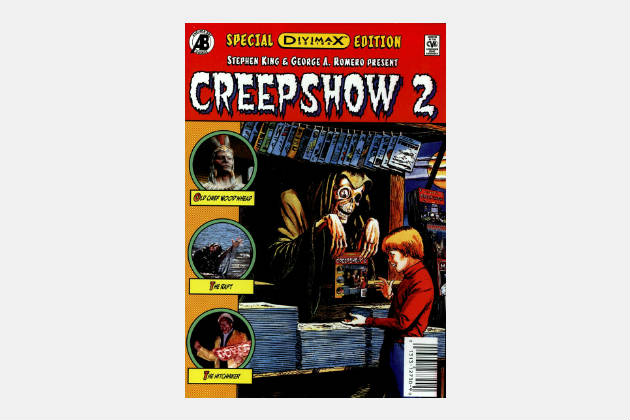
Creepshow 2 (1987)
“Thanks for the ride lady.”
While it might not keep you up at night, the second collaboration between George Romero and Stephen King is one of those rides you just love to take. Featuring 3 gleefully creepy stories — about a vengeful statue who punishes thugs for murdering his keepers, a lake blob that punishes teenagers for being teenagers, and a hit-and-run victim that just won’t die, Creepshow 2 was a horror anthology that our parents let us watch as kids, and for that we are thankful.
Fun Fact: Stephen King, the famed horror author, makes a cameo appearance in the segment titled “The Hitchhiker.” This isn’t King’s first time on screen for the “Creepshow” series, as he also had a substantial role in the original “Creepshow” in the segment “The Lonesome Death of Jordy Verrill,” where he played the titular character. King’s involvement with “Creepshow” extends beyond just cameos, as he wrote the original stories that the segments were based upon, underscoring his significant influence on this classic horror anthology.
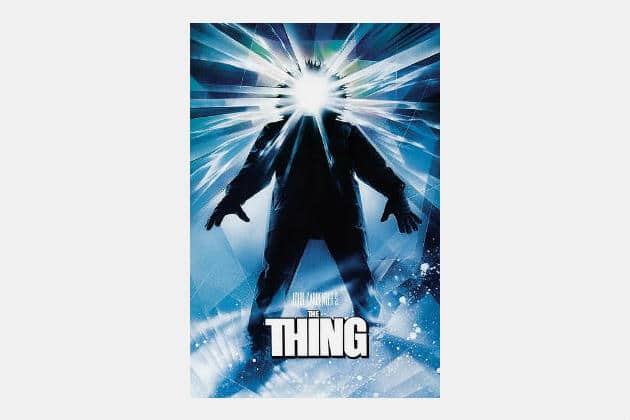
The Thing (1982)
“Nobody trusts anybody now, and we’re all very tired.”
Antarctica is frightening to begin with, just a million acres of desolation and ice. Add an isolated research station and an ancient, alien life form that assumes the shape of its victims and you have the perfect formula for a horror movie. John Carpenter’s 8th feature is scary because you never really have a complete grasp of what’s stalking the men of the research station, and neither do they. Not surprisingly, paranoia sets in as the men try not to die… or let the alien make it to civilization.
Fun Facts: No female characters appear in the movie. A woman does contribute, however. Adrienne Barbeau provides the voice for the only female presence in the film, the chess computer that Kurt Russell’s character plays against (and eventually pours his drink into after losing). This absence of female characters adds to the sense of isolation and mistrust among the all-male team at the Antarctic research station where the film is set.
Additionally, the movie’s intense focus on paranoia, trust issues, and a shape-shifting alien has made it a cult classic, praised for its groundbreaking special effects and haunting atmosphere.
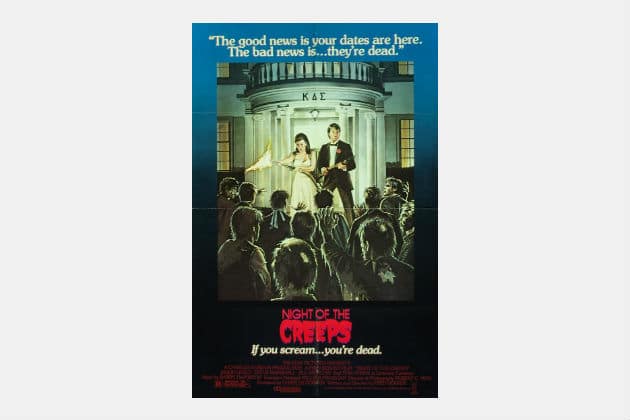
Night Of The Creeps (1986)
“What is this? A homicide, or a bad B-movie?”
The 80s enjoyed mixing a little comedy with its horror and Night of the Creeps takes that mashup one step beyond and blends together all the B-movie stuff it could think of: zombies, alien body invasions, wise-talking detectives, axe murdering asylum escapees. It’s more of an homage to B-horror than a spoof, with the very names of the characters playing tribute to some of the genre’s directors (Romero, Raimi, Carpenter).
Fun Facts: Many of the characters are named after famous horror and sci-fi directors. For instance, characters have the last names of Raimi (Sam Raimi), Cronenberg (David Cronenberg), Hooper (Tobe Hooper), Romero (George A. Romero), Cameron (James Cameron), Landis (John Landis), and Carpenter (John Carpenter), among others. Director Fred Dekker intentionally peppered the script with these nods to some of his filmmaking heroes, making it a fun easter egg hunt for genre fans. This subtle homage showcases Dekker’s love and respect for the horror and sci-fi genres and the creators who inspired him.
Tom Atkins’ character, Detective Ray Cameron, frequently uses the catchphrase “Thrill me” in “Night of the Creeps”. This same phrase can be seen on a theater marquee in the background of a scene in “The Monster Squad”, another cult favorite directed by Dekker the following year. It’s a subtle nod for fans and showcases Dekker’s penchant for linking his movies.

The Texas Chainsaw Massacre 2 (1986)
“But the saw, the saw is family.”
After making Poltergeist, the director of the B-movie classic Texas Chainsaw Massacre was given a bit more cash to make his second installment about the chainsaw wielding Leatherface and his cannibalistic family. This time around, the gore is ratcheted up, along with the dark humor, including a chainsaw duel between Leatherface and Dennis Hopper’s Texas marshall, who began stalking the clan after the events of the first massacre.
Fun Fact: The film has a considerably different tone from the original 1974 film. While the first “Texas Chain Saw Massacre” was a gritty and raw horror film, director Tobe Hooper chose to infuse the sequel with a significant amount of dark humor and satire. This change in tone surprised and even polarized fans and critics. Notably, the character of Chop Top, played by Bill Moseley, added a quirky, comedic touch to the film. Moseley’s portrayal of the unhinged character is often cited as a standout performance and has since become a cult favorite among horror enthusiasts.
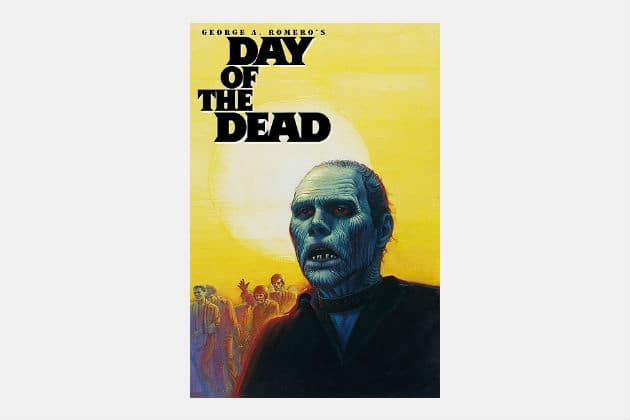
Day Of The Dead (1985)
“I call him Bub”
In the 3rd instalment of Romero’s Living Dead series, the fortifications have improved. The Pennsylvania farm house of the first and the shopping mall of the second film get traded up for an underground military base. A handful of soldiers and government scientists hole up as a growing ring of undead amass upstairs. It seems the safest scenario yet for surviving the zombie onslaught, until human differences, weaknesses and avarice combine to render an underground bunker thin protection from the eviscerating inevitable.
Fun Fact: The film was originally conceived as a much larger and grander project. George A. Romero, the film’s director, initially had a script that involved a more extensive underground facility, teams of trained zombies, and more advanced themes of human-zombie interaction. Due to budget constraints, Romero had to significantly scale down his vision for the film. Even with the changes, “Day of the Dead” remains a beloved entry in Romero’s “Living Dead” series and is celebrated for its unique take on the zombie apocalypse, its social commentary, and the introduction of Bub, the memorable, semi-domesticated zombie.
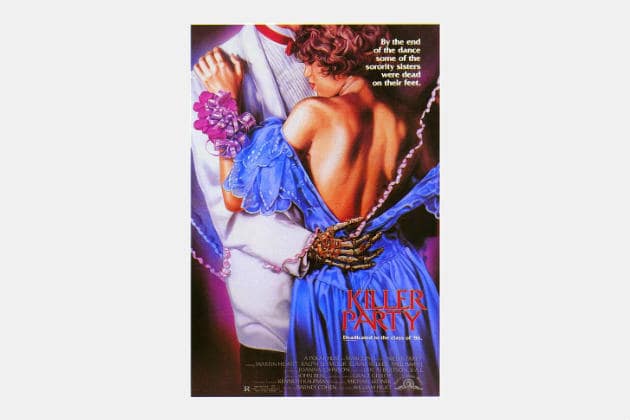
Killer Party (1986)
“Don’t put me in there with her!”
You might not find this on every “best of the 80s” rundown, but it’s fully worth checking out. Featuring solid 80s/horror conventions including frat/sorority hazing (complete with togas), costume parties, cursed houses, demon possession, and an extra-80s soundtrack. It delivers just enough camp and humor, and keeps up a pace that makes it thoroughly re-watchable while offering some decently executed scares and an excellent twist ending.
Fun Facts: The film was initially titled “April Fool.” However, considering the release of another horror film called “April Fool’s Day” in the same year, the title was changed to avoid confusion. This title switch showcases the era’s competitive nature, as the 1980s was a significant decade for the slasher and horror genres, with multiple films vying for audiences’ attention. The decision to change the title likely aimed to give “Killer Party” its own distinct identity apart from its similarly themed counterpart.
“Killer Party” features a music video within the movie. Early in the film, there’s a scene showcasing a fictitious music video for the song “These Are the Best Times” by a band named “White Sister.” This unusual, campy segment serves as a snapshot of the 1980s glam rock era and its influence on popular culture.
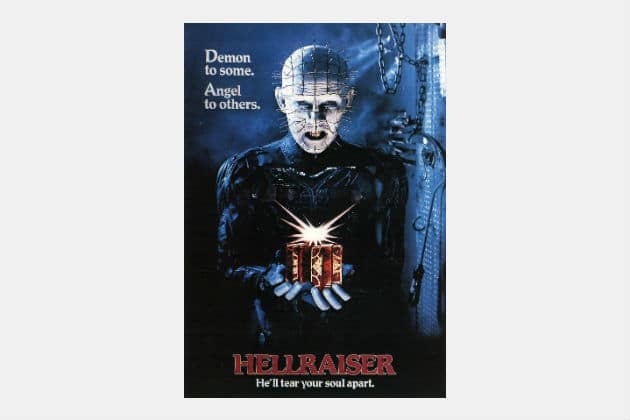
Hellraiser (1987)
“It’s just a puzzle box!”
For a horror film that skips the schtick and digs deep into the terror, Clive Barker’s Hellraiser fits the bill. When a man buys a mysterious box from a merchant in Africa, solving it and abruptly being torn apart is just the beginnings of the puzzle box’s handiwork. Featuring the nightmarish SMBD Cenobites and scenes of hellish unpleasantries that stick with you long after the credits roll, this is one you watch to really get the fear flowing.
Fun Fact: Despite becoming one of the most recognizable faces of horror, the character “Pinhead” isn’t actually referred to by that name in the original “Hellraiser” film. In the credits and throughout the movie, he’s simply listed as “Lead Cenobite.” It wasn’t until the sequels and growing popularity that the character widely became known as Pinhead. The catchy nickname was adopted over time and eventually even used in later films.
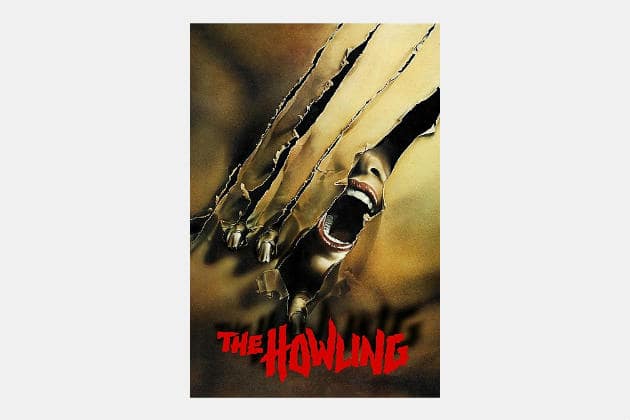
The Howling (1981)
“We should never try to deny the beast — the animal within us.”
1981 was a really good year for the werewolf. An American Werewolf in London and the less well-known Wolfen came as the same time as The Howling . This one concerns a television anchorwoman who helps the police capture and kill a serial killer. The trauma leads her to recuperate in a secluded “colony” recommended by her psychiatrist. Where the people are not quite human. With tons of references to classic werewolf cinema and 8 follow-up films this is a werewolf treasure chest.
Fun Fact: The special effects artist for “The Howling,” Rob Bottin, was only 21 years old when he took on the task of bringing the film’s werewolves to life. He was responsible for the movie’s groundbreaking transformation scenes, which involved a mix of practical effects, air bladders, and mechanical techniques to create the illusion of a human transforming into a werewolf in real time on screen.
These transformation sequences are considered some of the most iconic in horror cinema history. The success of “The Howling” set the stage for Bottin’s further success, as he would go on to work on the special effects for John Carpenter’s “The Thing” in 1982, another film lauded for its impressive practical effects.
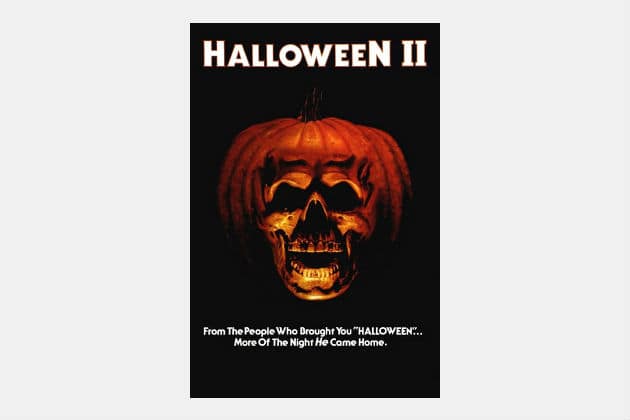
Halloween II (1981)
“An hour ago I stood up and fired six shots into him and then he just got up and walked away.”
The first Halloween ends with Michael Myers shot but surprisingly/not surprisingly still alive. Round 2 begins immediately, with Laurie Strode in an (unfortunately spooky) hospital. Myers makes his way to Laurie, inventively and gruesomely killing all who stand in his way. Adding a bit of warped family psychology to the mix, we find out that Laurie is Michael’s sister and, like Judith before her, must be killed. Dr. Loomis makes extra sure Michael is stopped for good this time, but the 4th installment in the franchise proves that not to be the case.
Fun Fact: “Halloween II” picks up directly where the original “Halloween” left off, making it one of the few sequels in cinema history to do so seamlessly. Despite the three-year gap between their releases, the narrative continuity is so tight that the sequel starts on the same Halloween night in 1978. Jamie Lee Curtis, reprising her role as Laurie Strode, even wore a wig in “Halloween II” to match her original hairstyle from the first film.
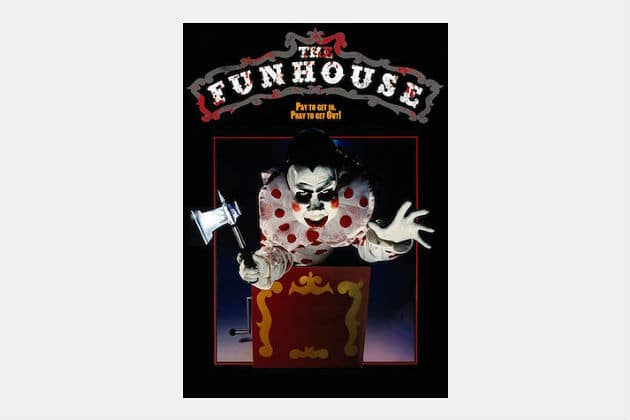
The Funhouse (1981)
“Oh my, my. That is a gruesome sight.”
When a friend suggests you stay the night in a carnival funhouse, say no. This is the film director Tobe Hooper made after the first Texas Chainsaw Massacre and before Poltergeist. It’s a kill-the-teens jaunt that takes a little while to get started, but like a roller coaster that must crest the top of the drop before the thrill begins, once the freakish monster and his pop start the carnage, it continues along at a gratifying clip.
Fun Facts: Universal Pictures was so impressed with the film’s premise and initial footage that they considered giving it a wide promotional campaign and a summer release. However, after a test screening went poorly, due to the audience laughing at the film’s climax, Universal chose to release it with minimal advertising in the spring. Despite this setback, the film has since gained a cult following.
The film’s poster art (not pictured above), which showcases a creepy figure with a bony hand clutching a ticket, does not actually represent any character from the movie. The artwork was designed to sell the horror aspect of the film, even though the character depicted is not part of the story. This type of marketing, while misleading, was not uncommon during the era as studios often used captivating and sometimes unrelated imagery to draw audiences to theaters.
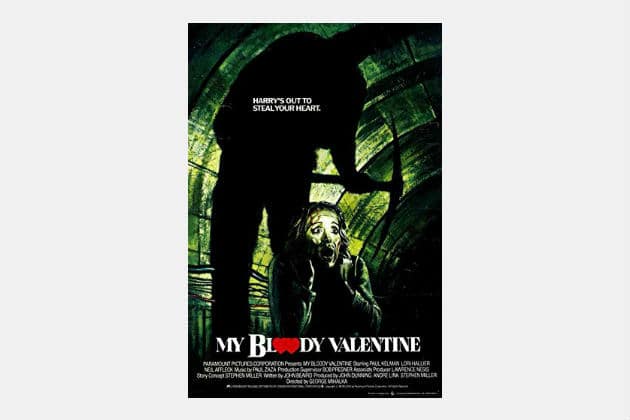
My Bloody Valentine (1981)
“Every February 14th, Harry comes back to town.”
Canada gets into the slasher game with this dark entry to the genre. Set in one of the better fear-inducing locations (shot in an actual coal mine) My Bloody Valentine employs a different holiday, swaps out teens for working class adults and kills its victims with a more utilitarian set of weapons than other films. The setting is eerie and the surprises are effectively executed. Throw in a mine cart chase/battle and you have a take on the 80s slasher that has a few new ideas (and pickaxes) to throw around.
Fun Fact: The film faced significant censorship from the Motion Picture Association of America due to its graphic violence. As a result, around nine minutes of footage was cut to avoid an “X” rating. These cuts led to a tamer theatrical release, which some fans believe diluted the impact of the film. For many years, the excised footage was thought to be lost. However, in 2009, a special edition DVD was released that restored much of the previously cut material.
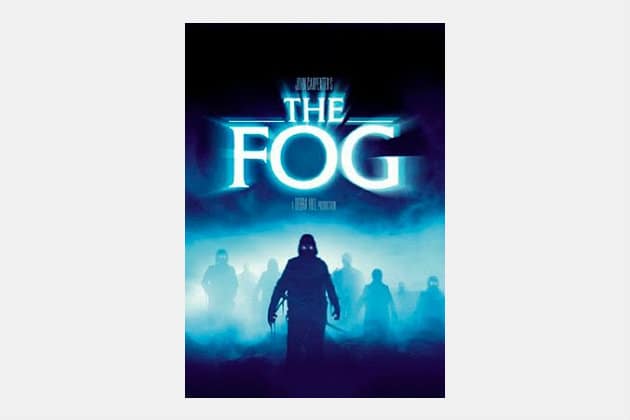
The Fog (1980)
“Almost midnight. Time for one more story…”
This is what happens when a campfire ghost story turns out to be true. Set in a California coastal town, The Fog was Carpenter’s first feature after Halloween and he brought back Jamie Lee Curtis to get chased not by a single unseen figure, but a whole horde of them, hiding in the fog. Like his previous work Carpenter builds the the tension with what we can’t’ see. Ultimately It’s the eerie atmosphere and overall weirdness of the setting that makes this ghost story succeed.
Fun Fact: John Carpenter wasn’t satisfied with the film’s original cut. After watching it, he felt it wasn’t scary enough. As a result, Carpenter went back and reshot several scenes, adding more suspense and horror elements. One of the most significant additions was the opening campfire scene with Mr. Machen (played by John Houseman) telling ghostly tales to children. This scene set the eerie tone for the entire film and was not in the original cut.
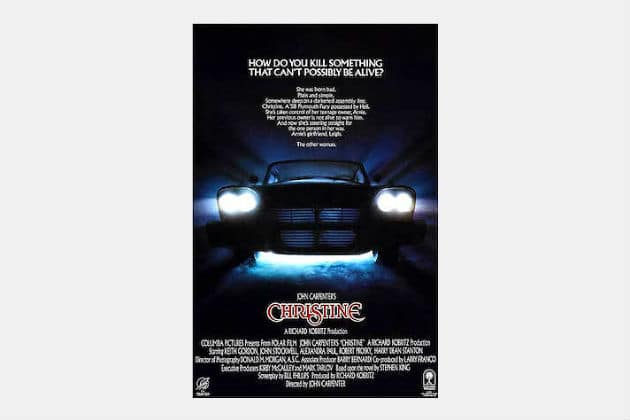
Christine (1983)
“You better watch what you say about my car. She’s real sensitive.”
The love a guy has for his car can border on obsession, especially when he restores it himself. But what if the car loves him back? According to King and Carpenter, that’s when things get dangerous. The 1958 Plymouth Fury named Christine turns bullied and nerdy Arnie into a cool kid as he returns the car to her former chrome and cherry glory. But when Arnie gets a girlfriend, Christine gets deadly jealous. Like the car, this is a classic — and the only one on our list to involve a car vs. bulldozer death match.
Fun Fact: Over 20 Plymouth Fury cars were used during the production. Due to the various stunt and action sequences, many of these cars were destroyed or damaged. However, it’s rumored that a few of them still survive to this day, restored and owned by car collectors and fans of the film. The production team also used similar models like the Plymouth Belvedere and Savoy as stand-ins for the Fury because the actual Fury models in pristine condition were difficult to find.
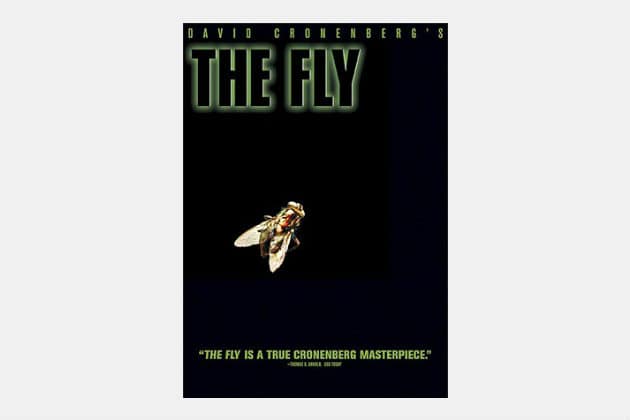
The Fly (1986)
“I’m becoming something that never existed before.”
Another lesson: when you get in the teleportation machine, makes sure you’re the only one in there. Chronicling the transformation of scientist Brundle (Jeff Goldblum) from human to human/fly hybrid, the shift is both fascinating and disgustingly horrifying. From the mind of David Cronenberg who does unnerving really well, this exploration of science gone wrong leaves a grotesque aftertaste, and it’s not just from watching Brundlefly eat.
Fun Fact: Jeff Goldblum, who plays the lead character Seth Brundle, performed many of his own gymnastic stunts in the film. In the scene where Brundle showcases his newfound agility by climbing the walls and ceiling, Goldblum actually performed those stunts himself, with the aid of hidden cables and rotating sets.
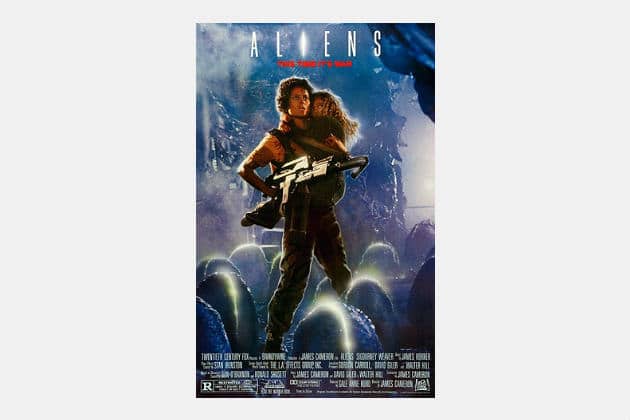
Aliens (1986)
“Get away from her, you bitch!”
Before he sank a ship and created blue forest people, James Cameron did the impossible: he followed one of the greatest sci-fi/horror films on record with a sequel that did not suck. In fact, it was about on par with Ridley Scott’s iconic vision of the xenomorph. RIpley is awoken from her stasis following her escape from the alien of the first film. Now she’s headed back to the exomoon where it all began, to find out what happened to a terraforming colony that hasn’t been heard from.
Fun Fact: The actors who portrayed the Colonial Marines were given military training prior to filming to enhance the authenticity of their characters. The training was overseen by the film’s technical advisor, Al Matthews, who played Sergeant Apone and was a real-life Vietnam War veteran. This preparation not only helped the actors move and behave like real soldiers but also fostered camaraderie among the cast.
Sigourney Weaver, who reprised her role as Ellen Ripley, and Paul Reiser, who played Carter Burke, were intentionally excluded from this training to create a natural tension between their characters and the Marines.
Disclosure: Clicking on these links and making a purchase may earn us a small referral fee, at no extra cost to you. Learn more here.
